Fall has officially arrived, and with it comes many of my favorites such as trees changing colors, football, chili, a break from the heat, bonfires, and looking forward to the winter holidays!
What I don’t care for too much would be all the falling leaves that will start happening soon. We have a lot of trees around us, so the lawn eventually will be a leaf blanket and quite thick.
A couple years ago, we decided that our family was getting a little too old for the fun of falling leaves, raking them into big piles and jumping into them. It’s just not as cool to do when you are a teenager, I guess.
Yet, we didn’t want to feel the back pain for a couple days or develop blisters, just to bag them all and toss out.
So, we started riding over them with the riding lawn mower instead. What we found is that it made a very cheap (cost of gas only) and easy way to mulch our yard for the winter. We weren’t sure it was going to work, but it did, and beautifully. In fact, last year we weren’t able to do it, because our mower broke down. And, this spring our grass wasn’t nearly as nice as it was the last couple years.
But, it got me thinking: are there other advantages to falling leaves? Yes, apparently there are.
Related: 12 Wild Medicinal Plants You Should Harvest This Fall
Lawn Mulch
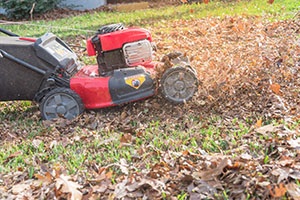
As I mentioned above, use your riding mower to make mulch for the lawn. Simply ride over the leaves a few times until they are all finely chopped. Here’s the hardest part, leave it. Don’t rake it up.
Yes, your lawn will look a little on the brown side for a short period. But, the tiny bits will break down over the winter and into the spring months to give the lawn incredible organic nutrients.
Depending on how many trees and leaves you have, you might have to do this more than once. It should be done with 6” or less of leaves lying on the ground. Then, if more fall later, do it again.
Make sure to take off the bagging attachment before you do this, because you want to leave it on the ground, not pick it up. Another important tip for this is to make sure rocks and large sticks are picked up before riding through the leaves. You don’t want to be surprised with flying objects coming from below the mower.
Leaf Mold
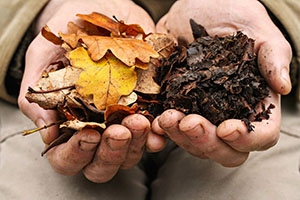 Leaf mold is another term for compost, but it’s leaves only. Nothing else is added. This takes time, and a little more effort than the riding mower method. Collect the leaves, fully intact or not, and place them in plastic bins or bags.
Leaf mold is another term for compost, but it’s leaves only. Nothing else is added. This takes time, and a little more effort than the riding mower method. Collect the leaves, fully intact or not, and place them in plastic bins or bags.
Store these leaves for 2-3 years. But, make sure to keep them moist. Fungi will eventually take over and make a nutritious leaf mold.
In a couple years, the leaves should have disintegrated into a dark nutrient-rich conditioner, which is great for soil. You should also notice that it will have a somewhat sweet odor.
Related: Should You Throw It Out? These Moldy Foods Are Still Edible
Protective Mulch for Landscaping and Gardens
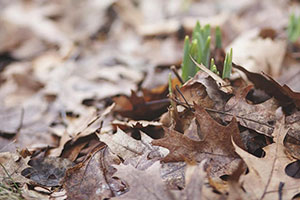 Chopped leaves can help with weed control and barrier for protection from the winter for your perennials, shrubs, and trees. It will also help conserve moisture.
Chopped leaves can help with weed control and barrier for protection from the winter for your perennials, shrubs, and trees. It will also help conserve moisture.
All you need to do is spread the chopped leaves around the bases, and it will act as an insulating cover and retain moisture.
A layer of leaves will also help bulbs that are planted in the fall, such as garlic or tulips. It will help them take root without actual sprouting, while protecting them from frost.
Great Way to Store Root Vegetables
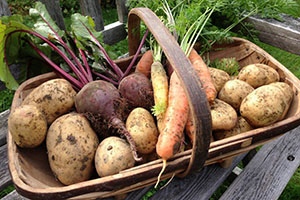 Are you looking for a good way to store your root vegetables? Find a humid and cool location, one where you can store your root veggies, such as beets or carrots.
Are you looking for a good way to store your root vegetables? Find a humid and cool location, one where you can store your root veggies, such as beets or carrots.
Place the vegetables between layers of damp leaves. If they are not damp, sprinkle each layer with water. Just make sure to not make them too wet or soggy.
This will help protect the vegetables until you are ready to use them. You could even use this method of storage if you purchase your root vegetables at the local farmer’s market.
Weed Barrier
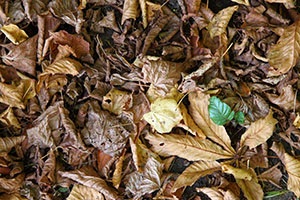 If you save them over the winter, you can use the leaves to act as a weed barrier for your spring plantings. These can either be left whole, or chopped up.
If you save them over the winter, you can use the leaves to act as a weed barrier for your spring plantings. These can either be left whole, or chopped up.
They will suppress weeds from coming up, as well as help to retain necessary moisture for the soil when planting your spring produce and plants.
Related: How to Keep Moisture and Pests Away from Your Food Stockpile
Make a Compost
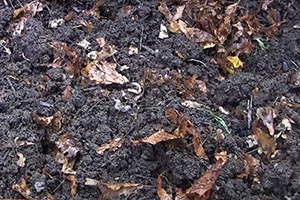 Leaves will make a wonderfully rich compost to boost your soil when planting. It’s rich in carbon and will compliment seasonal grass clippings that can be rich in nitrogen. The combination makes for a rich soil environment for many plantings.
Leaves will make a wonderfully rich compost to boost your soil when planting. It’s rich in carbon and will compliment seasonal grass clippings that can be rich in nitrogen. The combination makes for a rich soil environment for many plantings.
Simply save some leaves from the fall.
Then when spring comes, layer about 3-4 inches of the leaves with about 1 inch of freshly cut grass clippings, and you will have an all natural and rich compost to help your garden and landscaping.
So, if your leaf pile jumping days are over, make sure you take advantage of the falling leaves for the benefit of your surroundings…and your back. Even if you still like to pile them up and jump in them, put them to good use when you are done!
You may also like:
12 x More Efficient than Solar Panels? New Inventions Takes (Video)

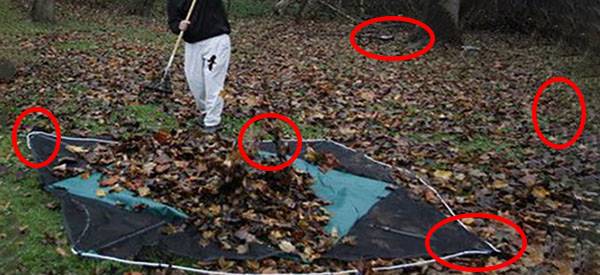





















I have mowed our leaves for years and used leaves around shrubs and perennials for protection and mulch. Use what your have and you will know it is not full of pesticides or etc .
Great article.
I never understood why many think leaves on a lawn are unsightly… When I grew up in the country we left the leaves from the forest and our many fruit trees right where they landed on the grass. They composed until the next spring and always contributed to the rich top soil. No fragmentation by lawnmower necessary! I guess if the microbes in the soil are happy, they take care of digesting whole leaves. So until this is the case, fragmenting the leaves may be the way to go; anyway, I still would trust microbes. Esp. in colder climates, I’d prefer whole leaves as they provide a better isolation for the life below (maybe that’s why our microbial processes were so successful!).
PS: I do remove the leaves from the pavement here in this xyz!@ smart city so any anti-nature city folk don’t rat us out to the authoritarians.
Did I mention I miss the chance living in the countryside?
one of the main reasons to mulch with a lawnmower is to keep the leaves from building up on roadways (dangerous to motorcycles and bicycles) and to evenly distribute them over the yard. they may blow into a drift next to a structure accelerating wood rot, aiding pests (termites), etc.. and simply for aesthetics.
We live off the grid without running water, so we compost our pee and poop according to the simple sanitary method of the Humanure Handbook. Leaves make the best cover material to cover pee and poop in the bucket, so there is never any odor in the house. We bag up the leaves and store them where they won’t get wet. When we dump the buckets into the outdoor humanure bin, we use leaves to cover that, too. Leaves also insulate the outdoor bin and keep it from freezing. The composting process continues all winter, keeping the compost pile warm all winter.
Regarding the leaf mold. Wouldn’t the leaves break down faster by collecting them with the grass attachment?Also, couldn’t you allow the leaves to naturally rot using the water that are in the leaves to begin with?
Dale: No, there’s not a lot of moisture in dead leaves. The only leaves we ever shredded were oak because they have a waxy coat.
Leaves dry in a snap unless the weather is wet. Usually, once wet, they’ll stay that way for weeks even thru a drought. A major warning about leaves is, too much nitrogen. They’re very low in nitrogen, but once bacteria and worms get to work, more than a few inches can mean a lot of fast growth and no food. Shredded means they rot faster, that’s all. whole leaves used as a mulch can last weeks longer, insulating the soil and feeding plants.
Next warning, if you already have slugs and snails, they love to live in leaves.
If you can, let ducks into the mulch to get fat on slugs and eatable fungus. Or, like we always did, truckloads in the chicken yard to entertain the birds. Come fall, the yard would be switched with what had been a garden and sown in a cover crop for them. So long as there’s plenty of space per bird, hens will get much, sometimes most of their feed out of the leaves. niio
I have mowed my leaves with my grass catcher on for years. It is a lot easier than raking. The first mowing usually has a fair amount of grass and weeds in it and it goes into the compost bin. The rest of the mowings I put into a round bin of old field fencing. There is not enough nitrogen for rapid composting but after a couple of years you have a beautiful black leaf mold that is a great soil conditioner especially for sandy or clay soils. Free and easy!
Scott: We never composted them, but used them for mulch or buried them. If you have earthworms, too thick a layer means far more nitrogen than you need. Worms mix air into their castings. Leaves are about 2% nitrogen, but those castings, wow! niio
Dad used to store cabbage thru winter by burying them in leaves. the grandparents did the same and when spring came, got premium prices for the cabbages.
Years later in town I told a kid about this, and he did it, borrowing a pickup to load an old barn foundation (a small one from horse days) with leaves. When fishing season started, he made a mint sell worms. Then, sold compost from the leaf pile. He offered me free worms but I smiled and said I could show him a guaranteed fish bait. Frozen wasp grubs. Fish swarm them, but they have to be collected ASAP after a freeze or birds will wreck the hives. I warned him to not tell anyone because his neighbors had tried to burn the worm bed (fat chance, it’s always wet) and would wreck wasp nests just to keep him from getting them. He was from Philly, but raised in our town. His folks fit in well–they were both a little crazy, making them naturals for us 🙂 niio
I’ve read in a couple places that archeologists have found large piles of mud dauber nests around a few Indian villages, but don’t know exactly why they were collected. Maybe fishbait? Maybe a subsistence protein? Must be similar to wasp grubs, my Dad would use anything for fish bait but I never heard of using wasp grubs before. Of course, in cold weather, we did all our fishing at a market.
Mike, grubs are very, very high in fat. Bee grubs are a big ticket food item in a lot of countries. But, one or two in a fish trap and by morning it should be packed. niio
I think allowing whole leaves to rest on a normal lawn will inhibit light and therefore kill the grass. In fact, I’ve seen it happen when I was too slow! It is much more beneficial to chop them up and allow the light to pass through.
royl: What’s a lawn? ! Hey, if a blade of grass comes up in the yard, I run for the shovel. Most of Arizona’s weeds are showy enough to call wild flowers, and they’re welcome. Most are medicinal herbs of some sort, as well, or food like mallow.
I worked for a big landscape company years ago, their mowing crews collected thousands of bags of leaves every fall. I’d take a few pickup loads home, dump ’em out and grind them up with my mower until I had a compost pile about 4 feet high and ten wide, just piled up on the ground, no compost bin or anything. Then you water the pile 2-3 times a week and turn it with a fork or spade every week, in our warm winters south of The Red it makes great compost in just a few months. Now that it’s modern times the nurseries here send all their waste to big commercial compost making operations who sell it at a reasonable price, so I am out of the habit of making my own. You can still drive around a city in the fall and collect the leaves homeowners have raked and bagged and set out on the curb if you want to make your own. It is as good quality of compost as you will find.
As for my yard, I have forty deciduous trees but have never raked a single leaf, love the way they look.
Mike: What are leaves? 🙂 I never thought I’d miss anything about the east, but miss the leaves. We used to lay 6 inches to a foot on the ground for winter and in spring, planted in that. For anew garden, 1 foot, dry, and let them get wet for weeks before planting. Take a shovel and chop a line down the row, drop in seeds, and water once.
But, we have mesquite and acacia, so forget leaves. When they fall, everything eats them. niio
There’s a lovely grove of 8 mature honey mesquites (P glandulosa, they get bigger and more spreading than the Southwestern mesquites like Tornillo) in our yard, it’s our picnic area. You’re right, everything that falls from a mesquite disappears in a hurry, it’s really something to see how fast it happens.
Mike: Our screwbean trees get twice as tall as honey. It likely has t do with less freezing on them. Other than that, I don’t know.
I said to folks, the mountain lion is gone. There’s coyote sign down in the brush. They love the taste of mesquite but can’t digest it. When the mountain lion showed up, all coyotes split in a hurry. Of course, when the bobcat came to this part of the valley, the mountain lion took leave. 🙂 She’s been back now and then, but never stays. niio
‘Gathering Leaves’
by Robert Frost,
New Hampshire 1923
Spades take up leaves
No better than spoons,
And bags full of leaves
Are light as balloons.
I make a great noise
Of rustling all day
Like rabbit and deer
Running away.
But the mountains I raise
Elude my embrace,
Flowing over my arms
And into my face.
I may load and unload
Again and again
Till I fill the whole shed,
And what have I then?
Next to nothing for weight;
And since they grew duller
From contact with earth,
Next to nothing for color.
Next to nothing for use.
But a crop is a crop,
And who’s to say where
The harvest shall stop?
The smoke of my own breath,
Echoes, ripples, buzz’d whispers, love-root, silk-thread, crotch and
vine,
My respiration and inspiration, the beating of my heart, the pass-
ing of blood and air through my lungs,
The sniff of green leaves and dry leaves, and of the shore and
dark-color’d sea-rocks, and of hay in the barn,
The sound of the belch’d words of my voice loos’d to the eddies
of the wind,
A few light kisses, a few embraces, a reaching around of arms,
The play of shine and shade on the trees as the supple boughs
wag,
The delight alone or in the rush of the streets, or along the fields
and hill-sides,
The feeling of health, the full-noon trill, the song of me rising from
bed and meeting the sun.
When I was a young lad, folks used to burn leaves in the gutter. To me it was always a reminder of Indian Summer with the warm, sunny days and chills nights with the fragrance of burning leaves in the air.
When I first arrived in SoCal in the fall 65 years ago that was the thing that I missed the most. Writing this just reminded me that October of 1955 I was just finished with Advanced Infantry Training and awaiting further assignment in Tent Camp 2, Camp San Onofre between San Clemente and Oceanside.
LCC: Now they frown on that in most states. Mostly, it’s worry about the road than creepy politics by malignant weirdos. But, a few dry leaves on grill will not hurt anyone.
If you worry about that, then invite Betty White down. She claims when she burns leaves in her backyard and the neighbors complain, she puts on a war bonnet and dances around the fire. She said nobody asks what she’s doing these days for fear she’ll tell them 🙂 She wrote a book, If You Ask Me. niio